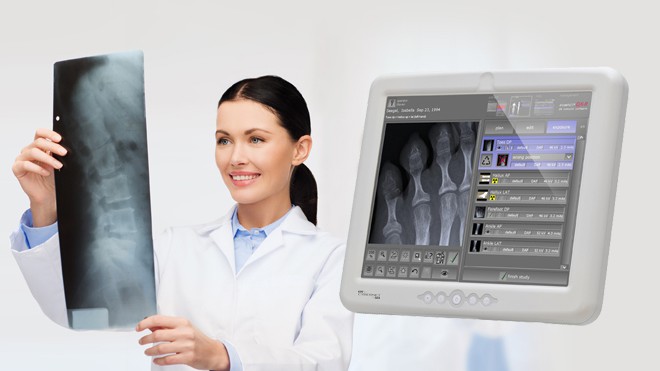Additive manufacturing, more popularly known as 3D printing, has advanced enough to create toys, figurines, and parts for more complex machines. Now imagine a world where they print three-dimensional objects like the housing of a medical tablet, custom medication, or even a new kidney made from one’s own cells.
So where are they? 3D printers themselves have been around since the early 1980s. They have since found use in the transportation industry, fashion, and even the food sector. As for healthcare, they were first used with the creation of dental implants and custom prosthetics. The technology has been hailed since then as the next revolution in the healthcare industry. Why, then, hasn’t it become widespread in clinics and hospitals like medical computers? Here are three challenges facing the widespread adoption of additive technology in healthcare.
Still in the Early Stages
Article Guide
In the simplest of terms, traditional manufacturing is done by shaping raw material like steel or plastic into the desired object through carving, grinding, or molding. This is called subtractive manufacturing. 3D printing is additive manufacturing where it builds or adds those raw materials layer by layer to create the final product.
So one major limiting factor is print speed. Even the top 3D printers’ build rates are slower than products made by traditional manufacturing. 3D printing costs for the mass production of a new drug or a generic prosthetic will be higher due to lack of economies of scale.
Issues with raw materials are also a limitation. Most, like the plastics used for a new set of teeth, need to be grounded into small particles for the printer. This is not cheap. The printed product like the teeth may need additional smoothing out and polishing to deal with bumps and rough spots. This adds to the costs.
Additive manufacturing for living tissue uses bioprinters. They suffer a different set of issues. Most find their spray nozzles are still too wide to successfully create the microscopic blood vessels necessary to print artificial skin. Finding the right combination of natural and synthetic polymers for the bioinks for simple body parts like artificial ears has been difficult (and expensive) let alone more complex organs like a heart.
High Risks Going Alone
Drugs are a vital part of patient care. They can stabilize blood pressure, control diabetes, and help a patient get a good night’s sleep. A 3D printer for drugs onsite at a hospital can make it convenient to print for its patients as needed. Even better, they can be tailored to each patient’s specific health conditions.
What happens, though, if the raw material used by the printer is slightly off? Or a well-meaning staff member decides to combine the formulas of two drugs (or more!) in an attempt for better patient care. They may not know of any problems with medications until it’s too late. And in the Internet of Medical Things (IoMT), it’s not impossible to imagine a scenario where a hacker breaks into the printer and alters drug formulas.
At the time of this writing, only two drugs have received approval by the FDA for 3D printing. The first, Aprecia, was approved in 2015 for the treatment of symptoms of epilepsy such as onset seizures and myoclonic seizures. The second, T19, was approved in 2021 to help deal with rheumatoid arthritis. Otherwise, pharmaceutical companies use traditional manufacturing methods for drug production (which they’re always looking to improve). This allows them ﹘ and not medical staff ﹘ to monitor the drug-making process from start to finish.
Lack of Regulation
Healthcare is heavily regulated in most countries. In the US, it’s by the FDA; in the UK, it’s the MHRA. It has to be. The risks both in lives and liability are too great. This doesn’t mean outright opposition to new technologies like 3D printing. The FDA, besides the two drugs above, has approved medical devices like orthopedic implants.
However, those approved are end products of the medical 3D printers. They are not on the printers themselves. This is an important distinction. There are currently no laws regulating printer design, durability, if they’re medical grade, etc. The FDA is currently seeking comments on 3D printing laws due to interest in the technology.
Until then, healthcare organizations take a chance when using a 3D printer on their own. And it’s a high one both in lives and liability. Using the example above, the hospital would have to deal with any legal fallout from obtaining the drug’s formula (which is proprietary) alone, or altering it by combining it with another drug. It’ll probably be responsible as well in any lawsuits involving any drugs printed out and used that are based on the hacker’s alterations.
These nightmare scenarios and more can apply to health organizations printing their own medical devices like syringes to human tissue like ligaments and tendons.
Closing Thoughts
Do the above issues spell the end to additive manufacturing in healthcare? Not at all. Limitations like the speed of the printers to available raw materials are technological-based and can be resolved. And proper safeguards like the regulation of 3D printer manufacture will lower risks to both patients and medical organizations. The 3D medical device market alone is expected to grow by 29.9 percent by 2027 for $4.6 billion in revenue.
Contact an expert at Cybernet if you’re interested in learning more about 3D printing in healthcare, and why its benefits outweigh the disadvantages.
Join the conversation and connect with us on this and other relevant topics – Follow us Facebook, Twitter, and Linkedin.
3D Imaging and Diagnostics in Healthcare
May 18, 2015
The technological advancements that have taken place within the clinical setting have changed the face of the entire healthcare industry. The extensive use of devices like medical grade computers has transformed the way…
0 Comments9 Minutes
How Medical Computers Are Revolutionizing the Healthcare Industry
October 4, 2015
Medical computers manage patients’ information and allow functions like writing & tracking prescriptions, managing patient billing and tracking all aspects of a patient's medical care. Medical computers are…
0 Comments6 Minutes
You Can't
Learn from a Pop-up
But we can deliver knowledge to your inbox!
We dive deep in the industry looking for new trends, technology, news, and updates. We're happy to share them with you.
Knowledge, News, and Industry Updates Right in Your Inbox




